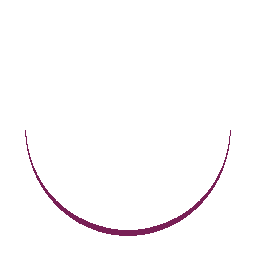Metals 101
Gold
Gold, a true example of a wonderful metal! It will not corrode, rust, or tarnish and although it is very strong, it is also the most malleable of all metals. The purity of gold is measured in karats, and in 24 parts. 24K gold is gold in its purest form; 12K gold is 50% gold and 50% alloy. 24K gold is very soft and is not ideal for jewelry and its everyday use and wear. Alloys such as silver, copper, nickel and zinc are added to gold for strength and color. 18K gold is durable yet has a beautiful appearance. 14K gold is very strong due to the amount of alloy included and still offers a beautiful shine. This is the most common karat used in jewelry. 10K gold is the strongest of the karats containing 41.7% gold and a larger amount of alloy.
Color - White Gold vs. Yellow Gold
The color of gold is established by the percent of alloy added to the gold. When gold is alloyed with copper, silver, and zinc, the shades of yellow will differ. The less alloy the brighter the gold's color will be. If gold is alloyed with nickel, copper, and zinc, it turns to white gold. Yellow gold and white gold normally share the same malleability and strength as each other. White gold's color is comparable to platinum, but these two metals have separate properties and vary widely in cost. White gold can also contain Rhodium, which is a form of the platinum family. This is usually added as a plating which brightens the white color. Because the two are so similar, choosing between the two depends upon a person's individual taste.
Palladium
Palladium is a silver-white metal from the platinum group that will not tarnish in air and remains forever white. It is one of the most rare and scarce metals in the world. Palladium is hypoallergenic—it is nickel free and contains no skin irritants. Palladium rings are 95% pure. They are very durable and will last for a lifetime.
Platinum
Platinum is relatively rare, and is more valuable than gold. It has become the most precious of all metals used in jewelry. Its popularity has surfaced in recent years due to its durability and nice silver–white color. Platinum is heavy and is offered in a purer form. Small amounts of iridium and ruthenium, rare metals in the platinum family, are usually added to increase its hardness and durability. Jewelry that is made is usually 95% platinum and 5% alloy. Platinum is not measured in karats like gold, but is stamped PT or PLAT to identify that it is platinum and will be accompanied by the number 950. Jewelry settings made of platinum provide a nice accent to white diamonds. Platinum has less chance of turning color than white gold due to its purity. It can be polished easily to restore its beautiful finish. This metal is also an excellent choice for people who may be allergic to other metals such as nickel, which may be added to gold.
Silver
Silver is another popular metal used in jewelry. It is bright and durable, and more abundant than gold. It does not carry the popularity of gold or platinum because it does tarnish and loose its bright shiny color easily. Jewelers will avoid using silver in a diamond setting or as fine jewelry because of this. Silver is less expensive because of its flaws and is more readily available than gold or platinum.
Titanium
Titanium is a light, strong, lustrous, corrosion-resistant (including resistance to sea water and chlorine) transition metal with a silvery-white metallic color. Titanium can be alloyed with other elements such as iron and aluminum to produce strong lightweight alloys. The two most useful properties of the metal form are corrosion resistance, and the highest strength-to-weight ratio of any metal. In its unalloyed condition, titanium is as strong as steel, but 45% lighter. The use of Titanium in the jewelry industry is becoming increasingly popular because of its attractive characteristics such as its durability and resistance to corrosion.
Commercially pure titanium can be cut, polished, engraved, and reworked using traditional jewelers equipment. Although harder and more resilient than other jewelry materials, it can be safely removed by using standard cutting tools.
Tungsten Carbide
Tungsten Carbide is a chemical compound containing tungsten and carbon, similar to titanium carbide. Its extreme hardness makes it useful in the manufacturing of cutting tools, abrasives and bearings, as a cheaper and more heat-resistant alternative to diamond. Tungsten carbide is also used as a scratch-resistant material for jewelry including watch bands and wedding rings.
Tungsten carbide can now be found in the inventory of some jewelers, most notably as the primary material in men's wedding bands. When used in this application the bands appear with a lustrous dark hue often polished to a mirror finish. The finish is highly resistant to scratches and scuffs, holding its mirror-like shine for years.



